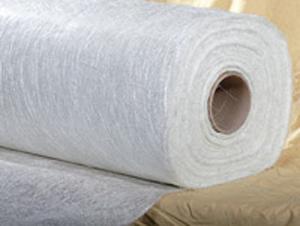Fiberglass fabric, a material that has been around for decades, has proven to be a game-changer in the boating industry. Known for its durability, strength, and lightweight properties, it has become the go-to choice for professionals and enthusiasts alike. But what makes this fabric so special? Let’s dive into the world of fiberglass and explore its many advantages.
The History of Fiberglass Fabric in Boats
The journey of fiberglass fabric in the boating world began in the 1940s when it was first introduced as a replacement for traditional wooden boats. The material quickly gained popularity due to its ability to withstand harsh marine conditions without rotting, warping, or corroding. Over the years, advancements in technology have only made fiberglass fabric more versatile and efficient, solidifying its place in the maritime world.
Why Fiberglass?
Fiberglass fabric offers a myriad of benefits that make it the top choice for boat construction. Let’s break down some of the key reasons why professionals prefer this material:
Lightweight and Strong
One of the most significant advantages of fiberglass fabric is its strength-to-weight ratio. It is incredibly strong yet lightweight, allowing boats to achieve better performance on the water. This attribute is particularly important for racing boats, where every ounce counts.
Corrosion Resistance
Fiberglass fabric is naturally resistant to corrosion, making it ideal for saltwater environments. It does not rust or corrode, ensuring a longer lifespan for boats and reducing maintenance costs.
Flexibility and Customization
The flexibility of fiberglass fabric allows for a wide range of design possibilities. Boat builders can create unique shapes and sizes that cater to specific needs, whether it’s for fishing, sailing, or leisure activities.
Durability and Longevity
Fiberglass fabric is known for its durability. It can withstand the test of time and harsh weather conditions, ensuring that boats remain in top condition for years to come.
Easy Maintenance
Maintenance of fiberglass boats is a breeze compared to other materials. They require minimal upkeep and can be easily cleaned and repaired if needed.
Environmental Impact
Fiberglass fabric is an environmentally friendly choice as it does not contribute to the depletion of natural resources like wood. It is also recyclable, making it a sustainable option for boat construction.
The Art of Fiberglass Boat Building
Building a boat with fiberglass fabric is an art form in itself. It requires skill, precision, and a deep understanding of the material’s properties. The process involves several steps, including:
1. Designing the Mold: The first step is to create a mold that will serve as the foundation for the boat’s shape. This mold is carefully designed to ensure the final product meets the desired specifications.
2. Laying the Fabric: Once the mold is ready, layers of fiberglass fabric are applied to it. Each layer is strategically placed to provide the necessary strength and support for the boat’s structure.
3. Applying Resin: After the fabric is in place, a resin is applied to bind the layers together. This resin not only strengthens the fabric but also provides a smooth, waterproof surface.
4. Curing the Boat: The boat is then left to cure, allowing the resin to harden and fully bond with the fabric layers. This process can take anywhere from a few hours to several days, depending on the size and complexity of the boat.
5. Finishing Touches: Once the curing process is complete, the boat is sanded, polished, and fitted with any additional components, such as motors, seats, and navigation systems.
The Future of Fiberglass in Boating
As the boating industry continues to evolve, so does the use of fiberglass fabric. Innovations in materials and construction techniques are constantly pushing the boundaries of what is possible with fiberglass. From self-healing materials to advanced composites, the future looks bright for fiberglass in the maritime world.
In Conclusion
Fiberglass fabric has truly revolutionized the boating industry, offering a combination of strength, durability, and lightweight properties that are unmatched by other materials. Its versatility and ease of maintenance make it an attractive option for both professionals and hobbyists. As we look to the future, it’s clear that fiberglass will continue to be a staple in boat construction for many years to come. So, the next time you’re out on the water, take a moment to appreciate the material that keeps you afloat and moving forward.

